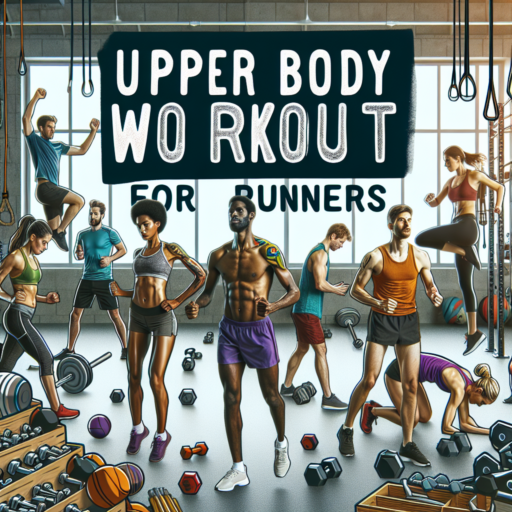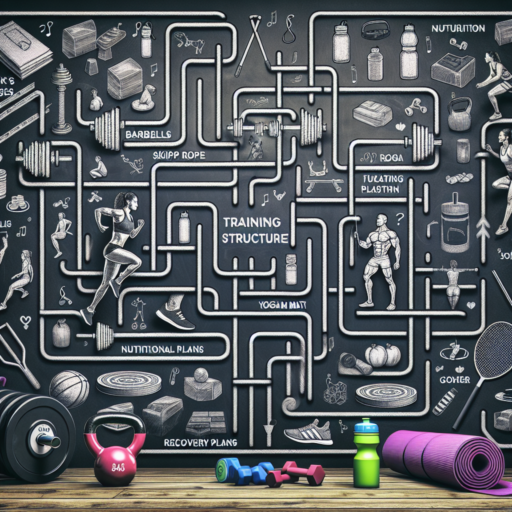How do runners train upper body?
Many might think that running is all about the legs, but a strong upper body is also crucial for runners. Effective upper body training can improve posture, enhance endurance, and boost overall performance. So, how exactly do runners train their upper bodies?
Integrating Resistance Training
Resistance training is a key component for runners looking to strengthen their upper bodies. Exercises such as push-ups, pull-ups, and dumbbell presses are frequently incorporated into training routines. These exercises not only build muscle but also support better running form by enhancing core stability and reducing the risk of injury. A balanced routine that targets the chest, back, shoulders, and arms ensures that runners develop strength evenly and maintain proper running posture.
Incorporating Circuit Training
Circuit training combines cardiovascular fitness with resistance training, making it an ideal choice for runners. By moving quickly from one exercise to another—such as from squat presses to plank rows—runners can maintain a high heart rate while simultaneously working on upper body strength. This method of training not only improves muscular endurance but also mimics the conditions of a long run, enabling runners to build stamina and power in a functional way that translates directly to their sport.
Understanding the importance of the upper body in running performance is crucial for comprehensive training. By focusing on resistance and circuit training, runners can ensure they are not neglecting this vital area. Such systematic and dedicated upper body training routines help in achieving a balanced physique, better endurance, and ultimately, improved running efficiency.
Should runners lift arms?
’ relatedtext=’Quizás también te interese:’]
The debate around whether runners should lift arms during their training regimen is a topic of much discussion in the running community. Lifting arms, or incorporating upper body strength training, can offer several benefits that might surprise those focused solely on leg strength and endurance.
Firstly, incorporating arm lifting exercises into a runner’s routine can lead to improved posture during running. Strengthening the upper body, particularly the shoulders and back, helps maintain a more upright posture which is crucial for efficient breathing and endurance. Moreover, a strong upper body can reduce the overall feeling of fatigue during longer runs by providing better support to the body.
Another key benefit is the potential for increased running efficiency. Arms play a significant role in balancing the body during the running motion, and stronger arms can help in propelling the body forward. This could lead to improvements in running pace and perhaps even reduced injury risk, as the body becomes better equipped to handle the rigors of running with a more balanced and robust physique.
How to get big arms as a runner?
As a runner, emphasizing your upper body, particularly your arms, might not be your first priority. However, incorporating specific strength training exercises into your routine can lead not only to bigger arms but also to improved overall performance. This guide will introduce effective strategies for runners aiming to enhance their arm strength and size.
Integrate arm-specific workouts into your routine
Start with incorporating arm-strengthening exercises into your weekly training schedule. Focus on exercises that target both the biceps and triceps for balanced growth. Exercises like curls, tricep dips, and push-ups are excellent for runners. These exercises do not require heavy weights but can be remarkably effective when performed with proper form and consistent frequency.
Embrace cross-training
Cross-training is crucial for runners who aspire to get bigger arms. Engaging in activities like swimming or rowing can contribute significantly to arm muscle growth. Both sports demand extensive use of arm muscles, leading to strength and size gains. Incorporating swimming laps or spending some time on a rowing machine each week can make a noticeable difference in your arm development.
Remember, achieving bigger arms as a runner involves more than just focusing on your legs. By integrating targeted exercises and cross-training into your routine, you can develop stronger, more prominent arm muscles that not only look impressive but also enhance your running performance.
Do bicep curls help with running?
When exploring the multifaceted approach to enhancing running performance, integrating bicep curls into a training regimen might seem unconventional at first glance. Traditionally, runners focus on cardio and lower body strength to boost endurance and speed. However, the role of the upper body in running efficiency cannot be understated. Bicep curls, a staple exercise for arm strength, may offer more benefits to runners than meets the eye.
The arms play a critical role in maintaining balance and rhythm during running. A strong upper body allows for better arm drive, which in turn can positively impact running pace and form. When considering bicep curls, it’s important to understand that while they primarily target the biceps, they also engage other upper body muscles, contributing to a more comprehensive strength that supports the running motion.
Moreover, incorporating bicep curls can lead to an improved posture during runs. Strong biceps and upper body muscles help in maintaining an upright posture, thus enhancing lung capacity and efficiency. This directly influences stamina and performance, allowing runners to maintain their speed for longer durations without succumbing to fatigue as quickly.




![JevenFening U-Shape Twister Arm Exerciser. Adjustable Chest Expander. Biceps,Triceps,Shoulders,Back,Forearm and Inner Thigh Workout Equipment.Upper Body Strength Training (Green [65-100lb])](https://m.media-amazon.com/images/I/41etrgVJX6L._SL160_.jpg)





